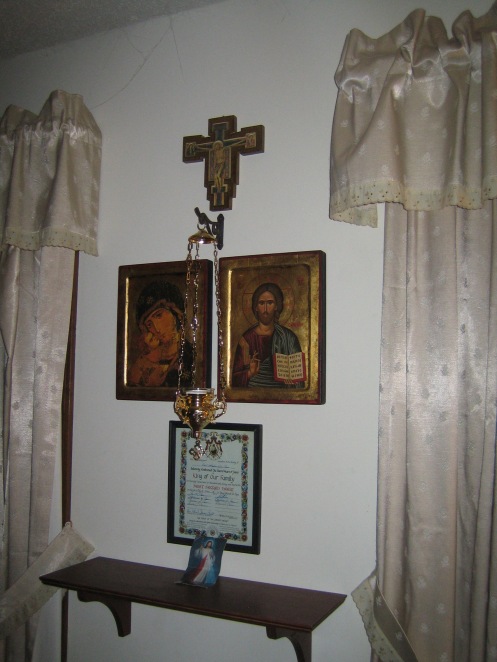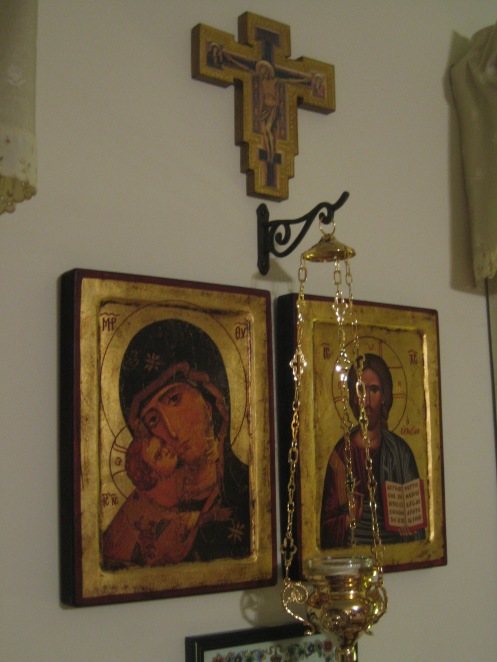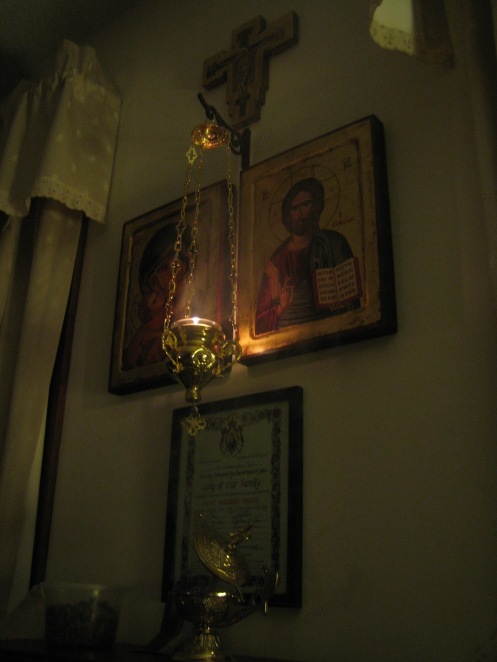According to Christians of the East, both Catholic and Orthodox, the Domestic Church is the Christian family comprising the smallest unit of the Christian community based upon the dictates of Our Lord as found in St. Matthew’s Gospel (18:20): “For where two or three are gathered in my name, there am I in the midst of them.” Based on this, logic clearly shows that essentially the Christian home is the gathering of two or more people because of and in the name of Christ. As the smallest extant example of the Church, it has in its microcosm the same general duties of, let’s say, a parish church: worship, Christian fellowship, charity, education in the faith, growth in virtue, evangelism, hospitality and works of mercy.
It is here that the notion of the “universal call to religious life” is to be understood. Too often Christians misinterpret this “universal call” as a universal call to some version of monasticism or priestly (ministerial) life, as if this is all that comprises what is “religious” or what is Christian. The laity, by this mindset, are relegated to something that has to be tolerated — as a group that should show up and shut up — “pay, pray, and obey” — for the laity are “weak” since they did not follow the “universal call” but instead accepted the barely tolerable state of the lay, family life. This attitude is regularly conveyed if not outright spoken. This attitude, my friends, is nothing short of CLERICALISM and is condemned by the Church. In spite of the efforts of various Popes going back to Bl. Pius IX to curtail this error, it seems that many Catholics embrace this attitude and dub it as “traditional”. “Traditional” because of what –it’s antiquity? Heresy is ancient too.
Further, some of my friends and I have been told that we must have a vocation to the ministerial priesthood because we pray, read the Bible, and go the Divine Liturgy/Mass regularly. The normal has become mistaken for the extraordinary (and folks, I’ll be the first to admit that I could afford to spend more time praying — so in this I do not feel I even meet what should be the “norm”), and the universal call of the Christian is mistaken for the special call to the ordained life. Fulfilling the basic norms of the Christian, whatever his state, is not a sign of a special calling to the priesthood or monastic life.
The universal call to the religious life is nothing more than what is fulfilled in a loving and devout Christian home, the Domestic Church: worship, Christian fellowship, charity, education in the faith, growth in virtue, evangelism, hospitality and works of mercy. St. Benedict, the Father of Western Monasticism, even says that the Christian home, too, is to be “a school for the Lord’s service”. We are ALL called to the religious life; however, NOT ALL are called to be monks and nuns. Yes, shocking as it may be to some…marriage is a VOCATION and a SACRAMENT.
The universal call to the religious life is best exemplified in prayer; and in the Domestic Church, it is the prayer of the family. What prayer? Which prayers? Well, any really; but if you want to “bring the Church home”, as it were, then bring the prayer of the Church home as best epitomized in the liturgies. The most ancient practice of this, both East and West, was the praying of the psalter as a family around the house shrine, the icon corner, the home altar. St. Hippolytus as far back as the second century makes reference to its common practice among the laity. The psalter, the Divine Office or the Liturgy of the Hours as it is more commonly referred to today, is the official liturgical prayer of the Church, second ONLY to the Divine Liturgy/Mass due to its sacred origins. The Psalms are divine poetry composed by God through human instrumentality and directed back to God. Who better to praise God than God? Who better to instruct in Wisdom and show us the prophecies than God? So, instead of the smorgasborg of personal, private devotions for one’s morning and night prayers, why not pray Prime or Lauds for morning prayer and Vespers or Compline for night prayer? Why not pray it as a family? This is the Devotio Antiqua. If you do this, then those artificial distinctions between “lay spiritualities” and “monastic spiritualities” and “clerical spiritualities” disappear, for the spirituality simply becomes a scriptural and liturgical spirtuality — the spirituality of the Apostolic Fathers, the Desert Fathers, and the Fathers of the Church.
Yes, be a religious, for we are all called to pray and perform works of mercy. Some of us are even called to be monks, nuns, and priests.


